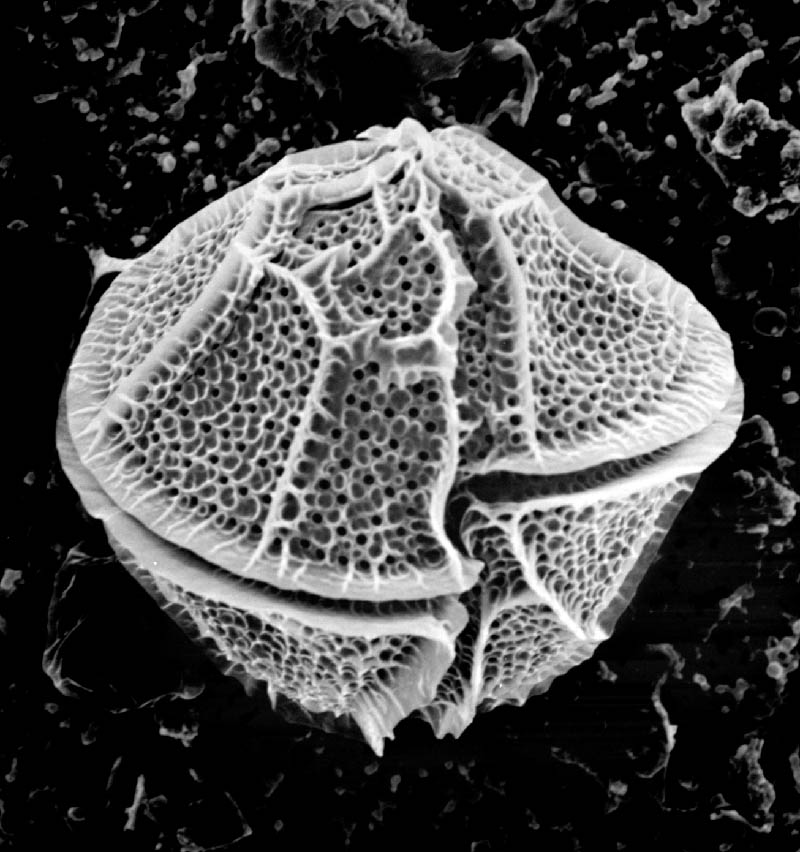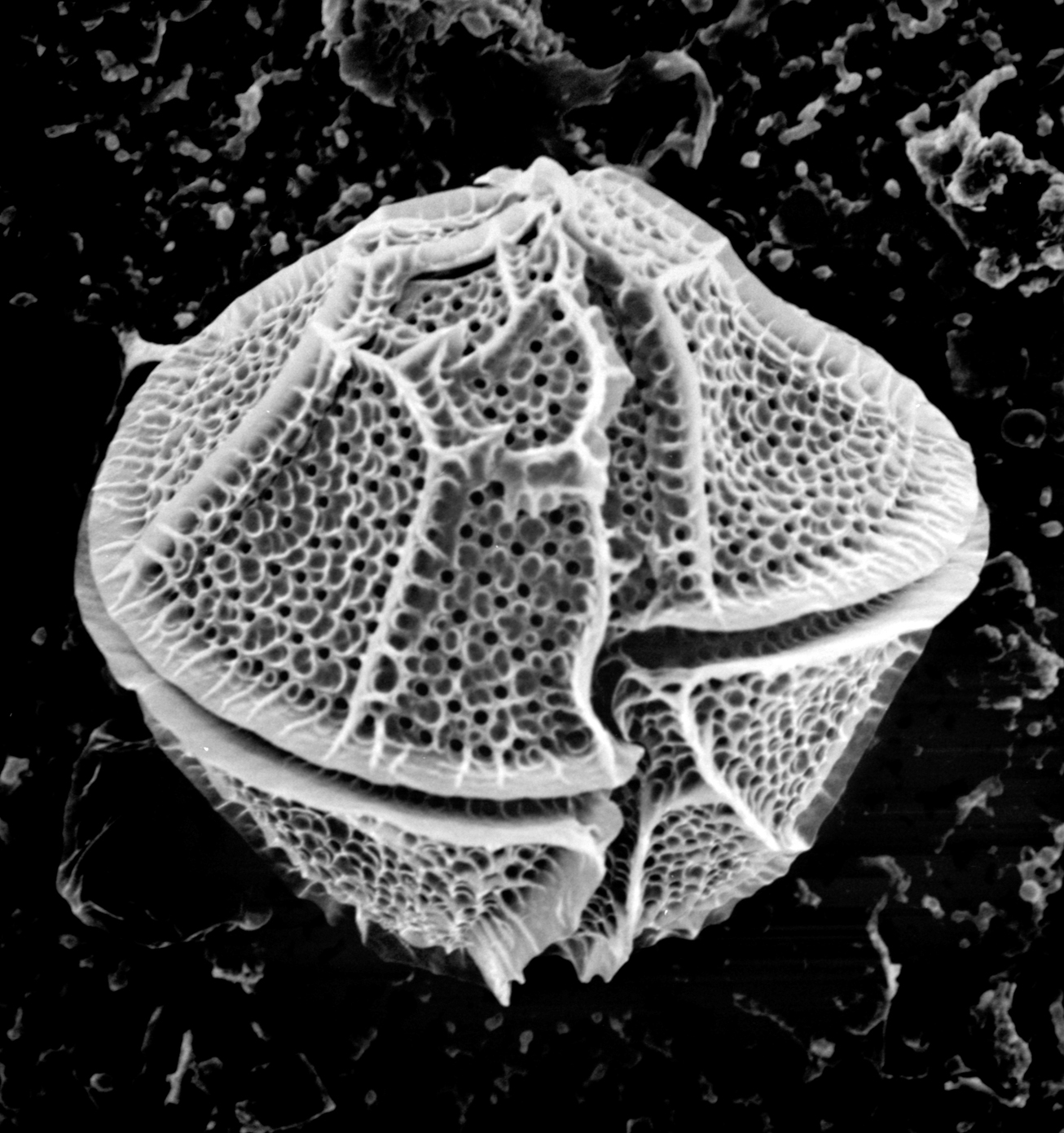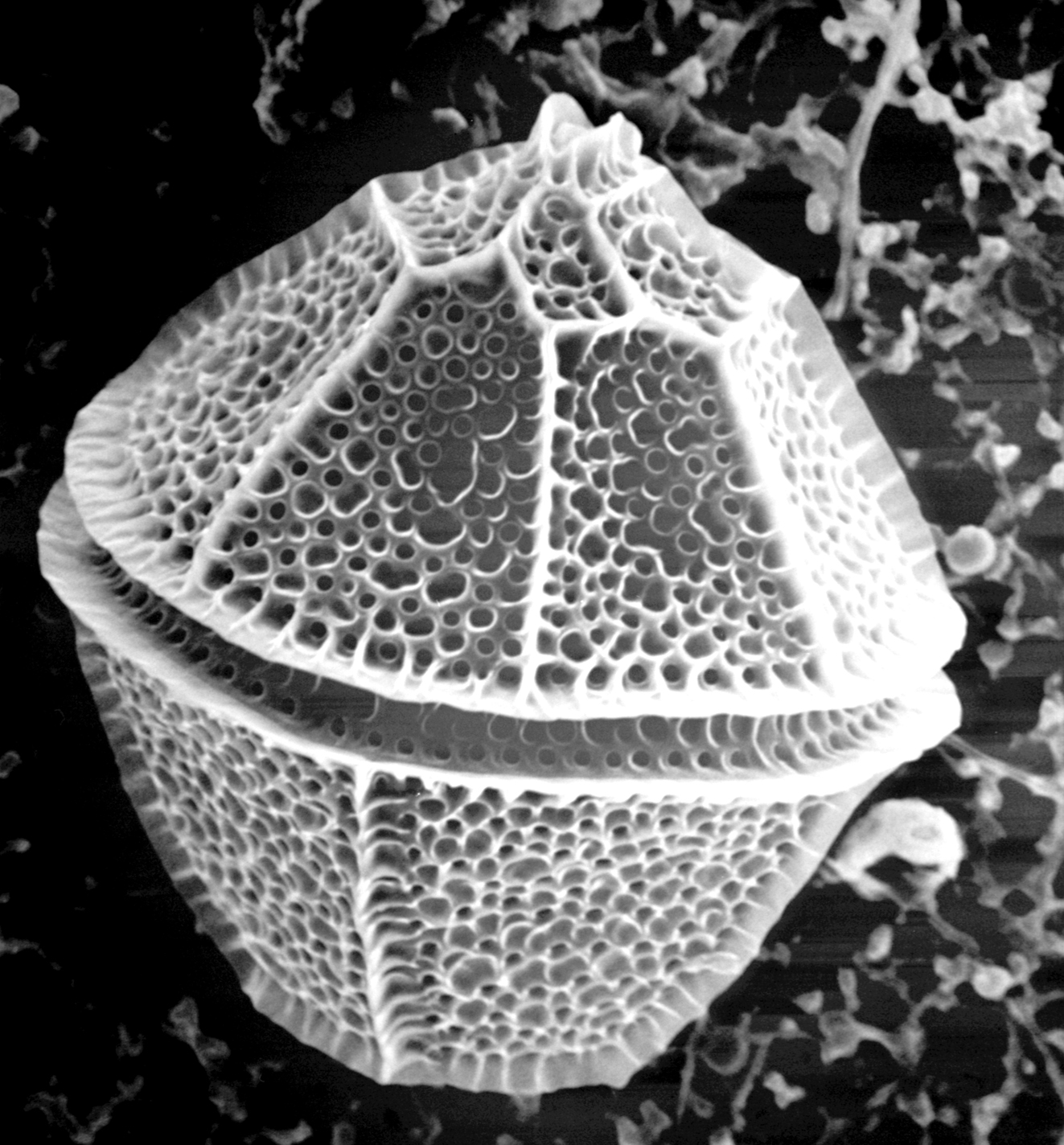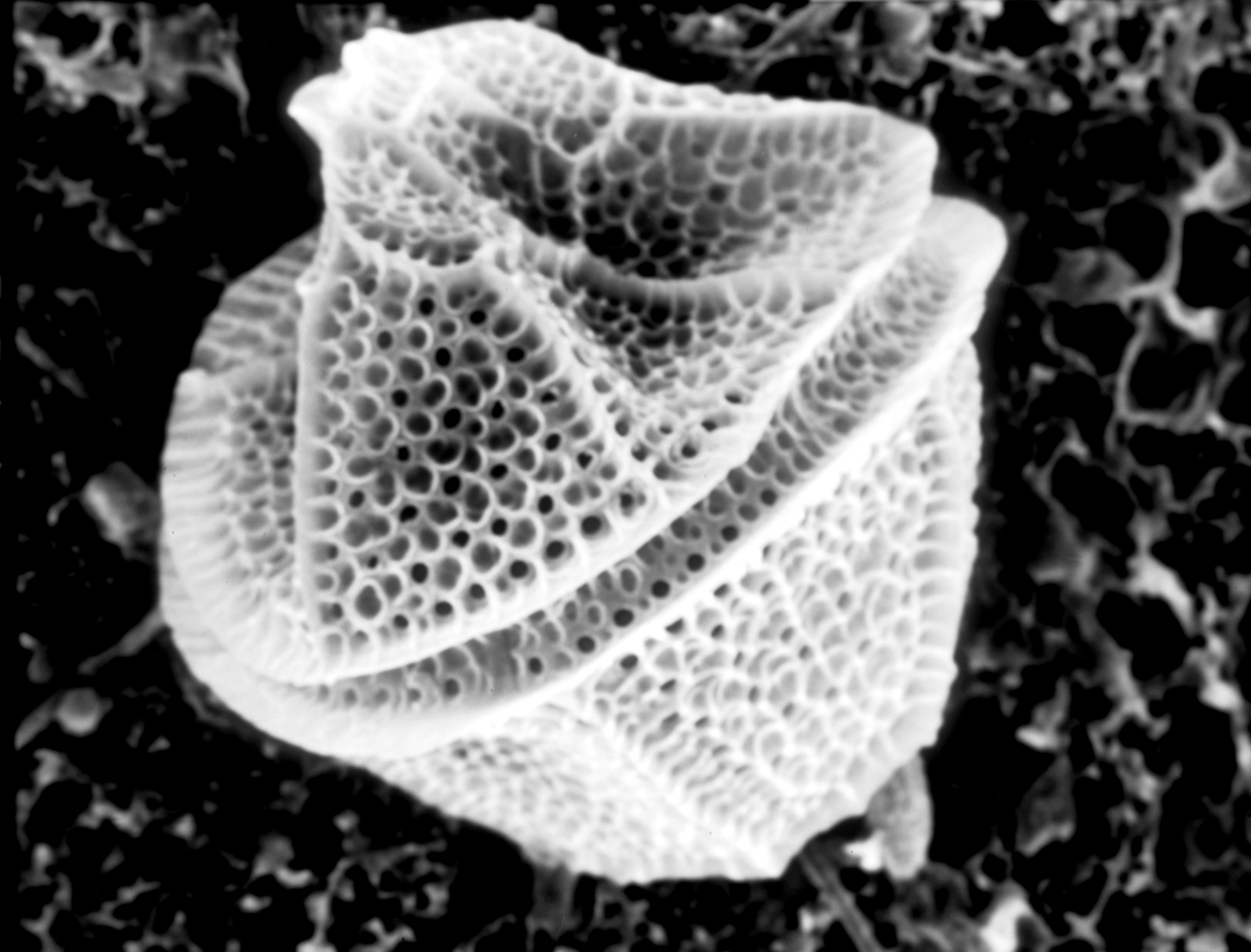Lingulodinium polyedra (F.Stein) J.D.Dodge (= Gonyaulax polyedra). Images made with Field Emission Scanning Electron Microscopy (FESEM). Collection of photographs of marine phytoplanktonic microalgae by Juan Antonio Alcober Bosch M[UV]HN.
Lingulodinium polyedra is a photosynthetic unicellular microalgae, provided with reddish-brown chloroplasts, flagellated and bioluminescent, 40-54 𝜇m long and 35-53 𝜇m in diameter, belonging to the ancient and successful group of dinoflagellates. The latter, along with other groups of microalgae, constitute a fundamental component of phytoplankton in marine ecosystems, being the support of numerous filtering organisms such as bivalves. L. polyedra is a species typical of warm waters, characterized by its polyhedral shape, approximately pentagonal, with a cellular cover made up of thick perforated cellulose teak plates, separated at the sutures between plates by ridges that are clearly visible to the FESEM. At the equatorial level there is a cleft that surrounds the cell (or cingulate), which houses a helical flagellum and delimits the upper portion (or epiteca) from the lower one (mortgage).
As other dinoflagellates, it has a complex life cycle that includes sexual and asexual reproduction. The usual mechanism of population growth is through cell division, but under certain conditions sexual reproduction is activated, and as a result, cysts are formed and deposited in the sediment. These are cellular stages of resistance that can remain dormant for decades. L. polyedra mineralized cysts have a wide geographical distribution and are well known in the fossil record since the Eocene, being known by paleontologists in their most common form as Lingulodinium machaerophorum (Deflandre & Cookson) Wall.
At the end of summer in bays, estuaries or inlets and under favourable environmental conditions of nutrients and temperature, the cysts germinate acting as inoculum for red tides or "blooms", explosive blooms of microalgae that give the water a remarkable reddish-brown colour. Many dinoflagellates have numerous toxins that can cause the death of other aquatic organisms, and in the case of humans, cause various intoxication cases with different degrees, from intestinal disorders to serious neurological disorders (Paralytic Shellfish Poisoning, PSP) or even death. Each species produces its own toxins, which in the case of L. polyedra includes, among others, the group of saxitoxins, powerful neurotoxins involved in cases of paralytic shellfish poisoning (PSP). The toxins pass to man through filtering invertebrates such as clams or mussels.
Along with other species such as Noctiluca scintillans, L. polyedra is also known to have a remarkable bioluminescence, which reaches its maximum intensity during night. It is one of the organisms that cause the surprising blue sparks and light trails that are sometimes seen when swimming or sailing on a dark summer night when large quantities of them are concentrated.
Images:























